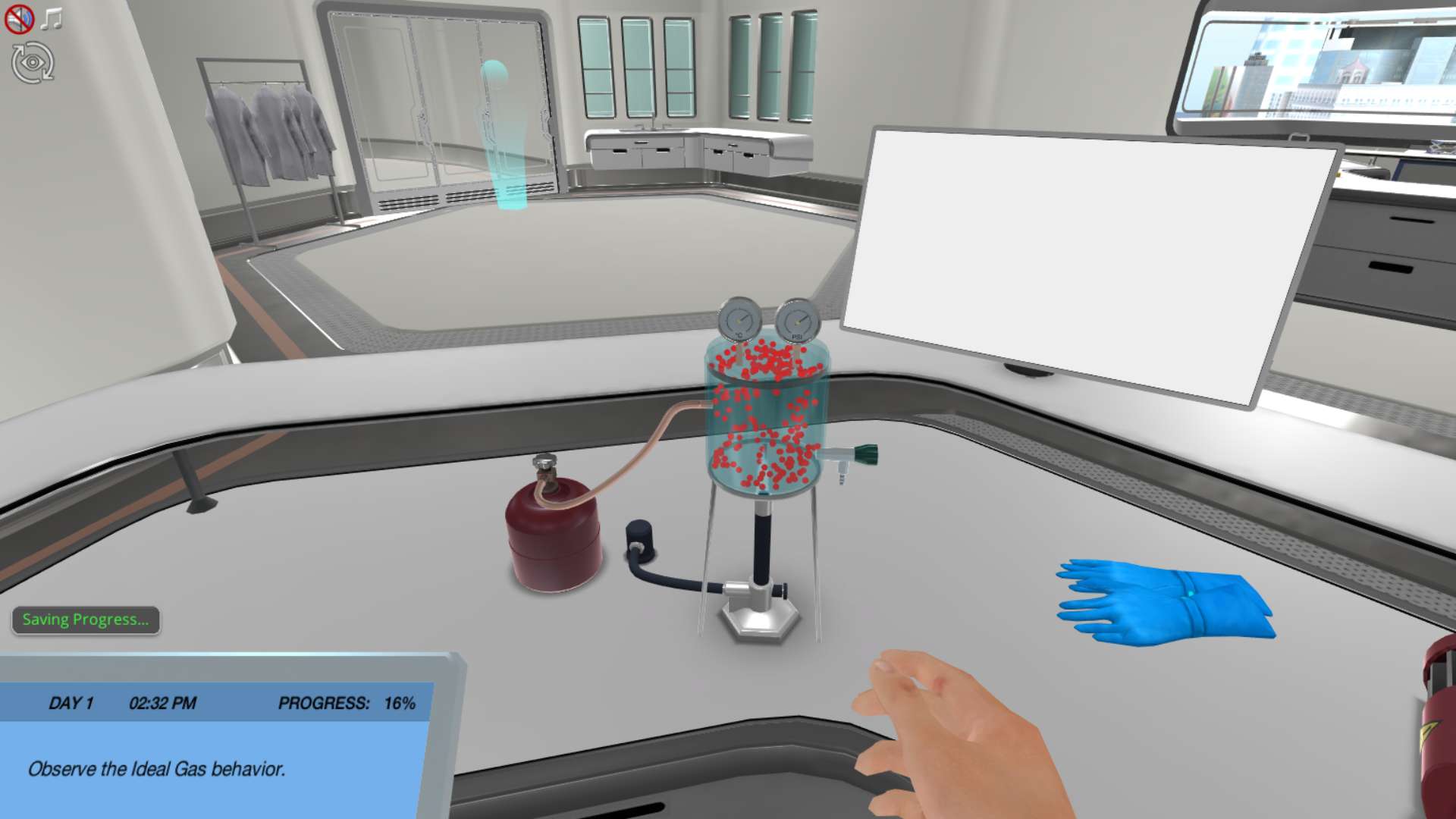Heading 1
Heading 2
Heading 3
Heading 4
Heading 5
Heading 6
Lorem ipsum dolor sit amet, consectetur adipiscing elit, sed do eiusmod tempor incididunt ut labore et dolore magna aliqua. Ut enim ad minim veniam, quis nostrud exercitation ullamco laboris nisi ut aliquip ex ea commodo consequat. Duis aute irure dolor in reprehenderit in voluptate velit esse cillum dolore eu fugiat nulla pariatur.
Block quote
Ordered list
- Item 1
- Item 2
- Item 3
Unordered list
- Item A
- Item B
- Item C
Bold text
Emphasis
Superscript
Subscript
About This Simulation
Use the Gas Thermometry technique to validate the Ideal Gas Law. Observe the behavior of an ideal gas and create your own temperature scale, while handling extreme temperatures with the help of your assistant.
Learning Objectives
- Explain the physical concepts of temperature and absolute zero
- Define the relationship between pressure, volume and temperature in gases using gas thermometry
- Apply the Ideal Gas Law
About This Simulation
Lab Techniques
- Gas thermometry
Related Standards
- HS-PS1-7
- 3.4 Ideal Gas Law
- 3.2 – Modelling a gas
- 3.1 – Thermal concepts
Learn More About This Simulation
Just because Celsius, Fahrenheit and Kelvin defined their own temperature scales and named them after themselves, it doesn’t mean that you can’t create your own! In the Ideal Gas Law simulation, you will define the physical concept of temperature and absolute zero. You will observe how ideal gas molecules behave according to the Ideal Gas Law, and you’ll learn about the relationship between pressure, volume and temperature in gases using gas thermometry.
Define your temperature scale
Your first mission in the Ideal Gas Law simulation will be to define a unique temperature scale. In order to complete this task, you will assign the correct temperature to various reference points. You will discover at which temperature water freezes and nitrogen boils. At the end of this mission, you will be able to calculate a new value of the Boltzmann’s constant.
Formulate the Ideal Gas Law
Imagine how easy it would be to understand the behavior of an ideal gas if the gas molecules were so big that they could be seen with the naked eye. Well, in this simulation they can! The gas molecules are magnified, so you can see what is otherwise invisible. Your next mission is to define the relationship between the pressure, temperature and volume of an ideal gas sealed in a glass jar.
Experiment with gas thermometry
Handling extreme temperatures is not a hazard as long as you’re a part of this simulation! Observe the changes in the pressure of an ideal gas as you cool it down from the temperature of boiling water to the temperature of boiling nitrogen. You will have complete freedom to repeat the experiment with any amount of gas and to define the absolute zero temperature.
Are you ready to apply the Ideal Gas Law and everything you learned in gas thermometry in order to assist the transfer of an organ for a transplant surgery?
For Science Programs Providing a Learning Advantage
Boost STEM Pass Rates
Boost Learning with Fun
75% of students show high engagement and improved grades with Labster
Discover Simulations That Match Your Syllabus
Easily bolster your learning objectives with relevant, interactive content
Place Students in the Shoes of Real Scientists
Practice a lab procedure or visualize theory through narrative-driven scenarios


FAQs
Find answers to frequently asked questions.
Heading 1
Heading 2
Heading 3
Heading 4
Heading 5
Heading 6
Lorem ipsum dolor sit amet, consectetur adipiscing elit, sed do eiusmod tempor incididunt ut labore et dolore magna aliqua. Ut enim ad minim veniam, quis nostrud exercitation ullamco laboris nisi ut aliquip ex ea commodo consequat. Duis aute irure dolor in reprehenderit in voluptate velit esse cillum dolore eu fugiat nulla pariatur.
Block quote
Ordered list
- Item 1
- Item 2
- Item 3
Unordered list
- Item A
- Item B
- Item C
Bold text
Emphasis
Superscript
Subscript
A Labster virtual lab is an interactive, multimedia assignment that students access right from their computers. Many Labster virtual labs prepare students for success in college by introducing foundational knowledge using multimedia visualizations that make it easier to understand complex concepts. Other Labster virtual labs prepare learners for careers in STEM labs by giving them realistic practice on lab techniques and procedures.
Labster’s virtual lab simulations are created by scientists and designed to maximize engagement and interactivity. Unlike watching a video or reading a textbook, Labster virtual labs are interactive. To make progress, students must think critically and solve a real-world problem. We believe that learning by doing makes STEM stick.
Yes, Labster is compatible with all major LMS (Learning Management Systems) including Blackboard, Canvas, D2L, Moodle, and many others. Students can access Labster like any other assignment. If your institution does not choose an LMS integration, students will log into Labster’s Course Manager once they have an account created. Your institution will decide which is the best access method.
Labster is available for purchase by instructors, faculty, and administrators at education institutions. Purchasing our starter package, Labster Explorer, can be done using a credit card if you are located in the USA, Canada, or Mexico. If you are outside of North America or are choosing a higher plan, please speak with a Labster sales representative. Compare plans.
Labster supports a wide range of STEM courses at the high school, college, and university level across fields in biology, chemistry, physics, and health sciences. You can identify topics for your courses by searching our Content Catalog.















